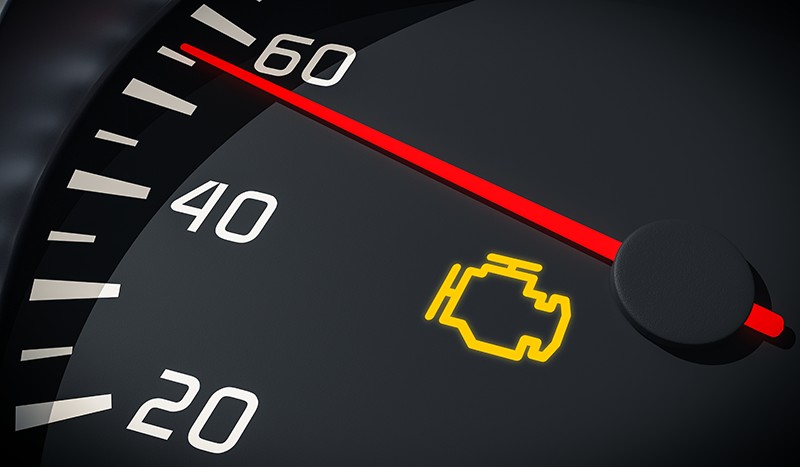When your car’s check engine light illuminates, it can spark a mix of concern and questions. A primary question many car owners have is: “How long does a diagnostic take for a car?” Understanding the car diagnostic process and the factors influencing its duration can help ease anxiety and prepare you for the service visit. This comprehensive guide will delve into what a car diagnostic entails, typical timeframes, and what to expect when you bring your vehicle in for a check engine light diagnosis.
Understanding Car Diagnostics: More Than Just Reading Codes
A car diagnostic is a systematic process used by experienced technicians to identify the root cause of a vehicle problem. Modern vehicles are equipped with sophisticated onboard computer systems that monitor various sensors and systems. When something malfunctions or falls outside of normal parameters, the check engine light may activate, and the computer stores diagnostic trouble codes (DTCs).
While reading these codes is a crucial first step, a complete diagnostic goes far beyond simply pulling codes. Technicians utilize these codes as a starting point to guide their investigation. The diagnostic process often involves:
- Initial Scan and Code Retrieval: Using specialized scan tools, technicians access the vehicle’s computer to retrieve stored DTCs.
- Symptom Analysis and Verification: Technicians will ask you about the symptoms you’ve noticed, such as noises, changes in driving performance, or unusual smells. They will also verify these symptoms.
- Component Testing: Based on the codes and symptoms, technicians will perform targeted tests on specific components and systems. This might involve using multimeters, oscilloscopes, and other diagnostic equipment to check sensor readings, circuit continuity, and component functionality.
- Visual Inspection: A thorough visual inspection is critical to identify obvious issues like leaks, damaged wiring, or worn parts.
- System Analysis: Technicians analyze the data collected from tests and inspections to understand how different systems are interacting and pinpoint the source of the problem.
 Check engine light illuminated on a car dashboard, indicating the need for a diagnostic service.
Check engine light illuminated on a car dashboard, indicating the need for a diagnostic service.
Average Time for a Check Engine Light Diagnostic
For a standard check engine light diagnosis, you can typically expect it to take around one to two hours. However, it’s important to understand that this is just an estimate. The actual time can vary depending on several factors, which we will discuss below.
It’s also wise to plan to leave your vehicle for at least a day at the service center. This allows the technicians ample time to not only diagnose the issue but also to source any necessary parts and potentially begin the repair process if you approve it. Many service centers, like Midway Ford, offer convenient options such as rental cars or loaner vehicles to minimize disruption to your day.
Factors That Influence Diagnostic Time
Several factors can affect how long a car diagnostic takes:
- Complexity of the Problem: A simple issue, like a loose gas cap or a faulty sensor that is easily accessible, will naturally take less time to diagnose than a more complex problem involving intricate systems or multiple interconnected issues.
- Vehicle Make and Model: Some vehicles have more complex systems or require specialized diagnostic equipment, which can extend the diagnostic time.
- Technician Skill and Experience: Experienced and well-trained technicians can often diagnose problems more efficiently due to their familiarity with various systems and diagnostic techniques.
- Availability of Information and Resources: Access to accurate repair information, wiring diagrams, and technical service bulletins can significantly speed up the diagnostic process.
- Shop Workload: The service center’s current workload can also influence the turnaround time. If the shop is busy, it may take slightly longer to get your vehicle diagnosed.
What to Expect During Your Diagnostic Service
When you bring your car in for a diagnostic service, here’s a general overview of what you can expect:
- Service Advisor Interaction: You’ll typically start by speaking with a service advisor who will gather information about your vehicle and the symptoms you’ve observed. They will create a work order and explain the diagnostic process and associated fees.
- Diagnostic Procedure: A qualified technician will perform the diagnostic steps outlined earlier, starting with code retrieval and progressing to more in-depth testing as needed.
- Diagnosis and Explanation: Once the technician has identified the problem, the service advisor will contact you to explain the diagnosis, the recommended repairs, and the associated costs. At Midway Ford, the diagnosis fee is valid for 90 days, meaning if you decline the repair initially but return within that timeframe, you won’t be charged for another diagnosis for the same issue.
- Repair Decision: You’ll have the opportunity to ask questions and make an informed decision about whether to proceed with the recommended repairs.
Scheduling Your Diagnostic Service
While some service centers may accept walk-ins for check engine light diagnoses, scheduling an appointment is generally recommended. Appointments help ensure that technicians are available to work on your vehicle promptly, potentially reducing the overall time your car is in the shop. You can often schedule service appointments online or by phone, offering added convenience.
Conclusion
Understanding “how long does a diagnostic take for a car” involves recognizing that it’s not a fixed duration but rather depends on various factors. While a typical check engine light diagnostic might take one to two hours, planning for a day-long service visit is advisable to accommodate potential complexities and allow time for repairs. By understanding the diagnostic process and what to expect, you can approach your service appointment with greater confidence and be better prepared to address your vehicle’s needs. If your check engine light is on, it’s always best to seek professional diagnosis to ensure the issue is accurately identified and resolved, preventing potential further damage and maintaining your vehicle’s optimal performance.
